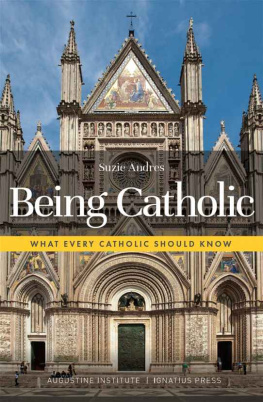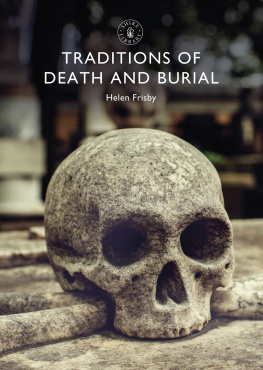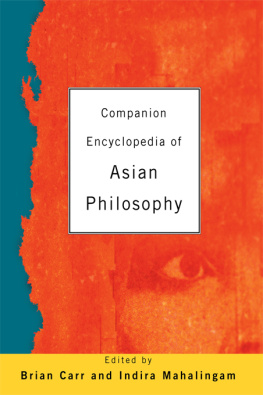Introduction

Many Catholics pray to St. Anthony when they lose something, and others keep a St. Christopher medal in their car. Many Catholics receive ashes on Ash Wednesday. Many such customs have been handed down in families, and sometimes Catholics continue to practice them without really thinking about them. Learning the history and significance of these customs, however, allows us to deepen our spiritual lives.
Religious artwork, medals, the colors and seasons of the Church year, and the many forms of public and private devotion are some of the treasures and traditions of our Catholic Faith. As with our family heirlooms, we should not only discover or rediscover the reasons behind them but also keep them always before us. In these pages, we will see how the treasures and traditions of our Faith remind us of our roots and also lead us toward our heavenly destination.
A statue of Mary on the lawn, a rosary hanging from a cars rearview mirror, and a holy-water font near the front door are outward signs of a Catholic lifestyle. Let us examine these and many other treasures and traditions and see how they can also form our inner lives.
Catholicism
The Modern Catholic Dictionary defines Catholicism as the faith, ritual, and morals of the Roman Catholic Church as a historical reality, revealed in Jesus Christ and destined to endure until the end of time. At the core of this system of doctrines and practices is the good news that Jesus, the Son of God, became man, was born of the Blessed Virgin Mary, died for the sins of mankind, and rose from the dead. The beliefs of the Catholic Faith are summarized in the Nicene Creed, a prayer that is said when Catholics gather for worship.
This system of doctrine, cultus, and practice is called Catholic (universal) because it is intended for all mankind, for all time, contains all that is necessary, and is suitable in every circumstance of human life.Catholicism spreads a message of hope in eternal life with God in heaven.
Catholicism, in Father John A. Hardon, S.J., Modern Catholic Dictionary , Real Presence Association, http://www.therealpresence.org/cgi-bin/getdefinition.pl.
Ibid.
C hapter 1
The Church
The Catholic Church, also called the Mystical Body of Christ, includes members from all over the world.
The Catholic Hierarchy
The Church has a hierarchy of priests, bishops, and cardinals. The structure has served the Church well since the days of the apostles.
The Pope
The pope is the leader of the Catholic Church and the bishop of Rome. He is the successor of St. Peter, to whom Christ entrusted His Church. In addition to being a religious leader, the pope is recognized as a head of state because he leads the Vatican, which is an independent country.
The pope is required to meet with every Catholic bishop in the world at least once every five years to learn the conditions of their dioceses. This is an informative but potentially exhausting task. In 2016, for example, the Vaticans yearbook, Annuario Pontificio , reported that there were 5,237 Catholic bishops in the world. Consequently, the pope had to meet with approximately twenty bishops per week to fulfill his duty.
Papal seal (left): The keys, representing the keys to the kingdom of heaven, which Christ gave to St. Peter, are gold and silver, to symbolize the powers of loosing and binding (Matt. 16:19). The triple crown represents the popes power as father of kings, governor of the world, and Vicar of Christ. The cross atop the globe surmounting the crown symbolizes the sovereignty of Christ.
Cardinals
Cardinals advise and help the pope govern the Church. Because they serve in leadership roles around the world, cardinals can be the eyes and ears of the pope to alert him to problems as they arise. The pope personally selects each cardinal. The Code of Canon Law of 1917 requires that men must first be ordained priests before they can become cardinals. Since 1962, there has been a further stipulation that men must serve as bishops before they can become cardinals. Cardinals wear red robes. When a pope dies, the College of Cardinals elects his successor.
Bishops and Archbishops
Christ chose apostles to help in His work. Todays bishops are the successors of the apostles. Bishops govern dioceses (geographical groups of parishes) and serve in other administrative roles. The term archbishop is used for those who supervise other bishops and govern an archdiocese, an especially large diocese.
Bishops are selected in a secretive process that usually begins at the diocesan level and moves through a series of consultations. The names of priests who are strong candidates are sent to the pope, who makes the final decision.
A Catholic bishop, pope, and priest
Priests
What does a priest do? Pope Benedict XVI summed up the answer to that question when he told a crowd in St. Peters Square that the priest represents Christ. The pope emphasized that the three duties of a priest are teaching, sanctifying, and governing. Priests celebrate Mass, administer sacraments, and serve as spiritual advisers. They also work as hospital, university, and military chaplains, teachers, missionaries, and administrators.
Deacons
Deacons are ordained ministers who may be transitional, if their ordination is a step on their path to the priesthood, or permanent, if they are not studying for the priesthood. Deacons do not say Mass, but they can baptize, read the Gospel, preach homilies, conduct funeral services, and, with permission, officiate at marriages held outside of a Mass. A married man can enter a program of studies to become a permanent deacon, but a deacon who is single cannot marry. If a married deacon is widowed, he may not remarry without special permission.
The Vatican, a Country That Leads a Church
The Vatican, home of the Catholic Church, is the worlds smallest country. It comprises slightly more than one hundred acres and is one-eighth the size of New York Citys Central Park. The Vatican is also one of the newest countries. Although popes have lived in the area since the fourth century, the Vatican has been recognized internationally as an independent sovereign state only since 1929. It has its own flag, coins, and postage stamps as well as license plates for the cars driven by its approximately eight hundred residents. The Vatican is a monarchy headed by the pope. Its governing body, the Holy See, carries out the administrative tasks of this country.
Next page

















